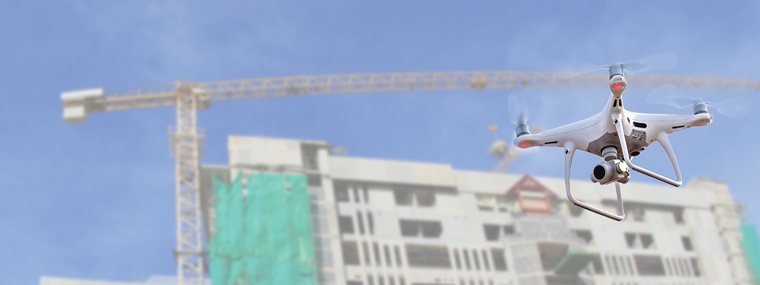
Using Modern Drone Technology to Manage Properties More Efficiently
By Scott O’Connor / Published February 2019

The problem addressed here is how to detect building envelope problems early before they escalate and become large, expensive problems. Most high-rise condominium structures receive little exterior maintenance between paint cycles. Typically, paint cycles vary between seven to ten years. Over that period of time, buildings can deteriorate and become unsafe. Also, the longer the building problem goes undetected, the costlier the repair. One of the main reasons problems have gone unnoticed is because there were previously no low-cost, effective methods of detection available.
Structures located within one mile of the ocean typically experience the most challenging conditions and have the highest occurrence of damage. Corrosion of steel-reinforced masonry construction is the most common form of damage observed in coastal communities. Salt air, wind-driven rain, harsh sun, and sand blowing in from the beach have a significant effect on buildings located in close proximity to the beach. Cracked stucco, exposed steel, and/or spalling conditions, if not caught early, can potentially lead to very costly repairs. Structural failure may also occur.
Aerial drone surveys can provide a high-quality, comprehensive, cost-efficient, expedited visual inspection of the entire building envelope. Using aerial drones for surveying the building envelope can save weeks or months of time and expenses as well as produce high-quality digital images and video.
Prior to the use of aerial drones, most exterior surveys were done by hanging swing-stage scaffolding or high-reach equipment, which was very cumbersome. These methods were very expensive, inconvenient, and time consuming, as they required closing off large sections of property during setup and operation.
TRC began using aerial drones on mid- and high-rise roof surveys in early 2018.This service became popular with building owners and managers, and soon expanded to the surveying of entire building envelopes. Previously, surveying multiple roofs with varying elevations presented a major challenge. Many of the elevations were not easily accessed by conventional means and were very time consuming—some jobs took 45 days or more to complete. By using aerial drones, TRC reduced the survey time to one day and increased the cost savings significantly, which the property owners greatly appreciated.
Scott O’Connor
Executive Vice President of TRC Worldwide Engineering, Restoration & Inspection
Scott O’Connor is Executive Vice President of TRC Worldwide Engineering, Restoration & Inspection in Southeast Florida. He received his industrial engineering BS from Northern Illinois University and has more than 40 years’ experience in forensic failure/construction material sciences. Managing waterproofing and restoration projects for condominium, multi-use, and historic projects is his forte. He is a Florida state licensed provider who writes and conducts continuing education classes relating to the concrete restoration industry in addition to authoring articles. For more information on TRC, visit www.trcww.com, email soconnor@trcww.com, or call (954) 484-7777 ext. 218.




